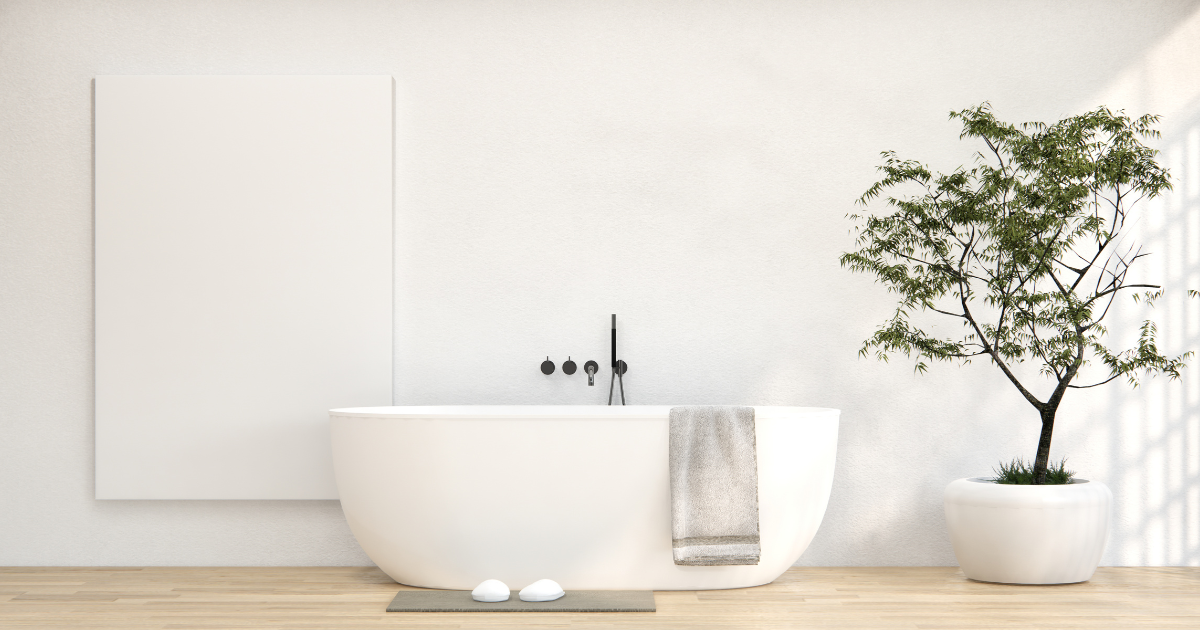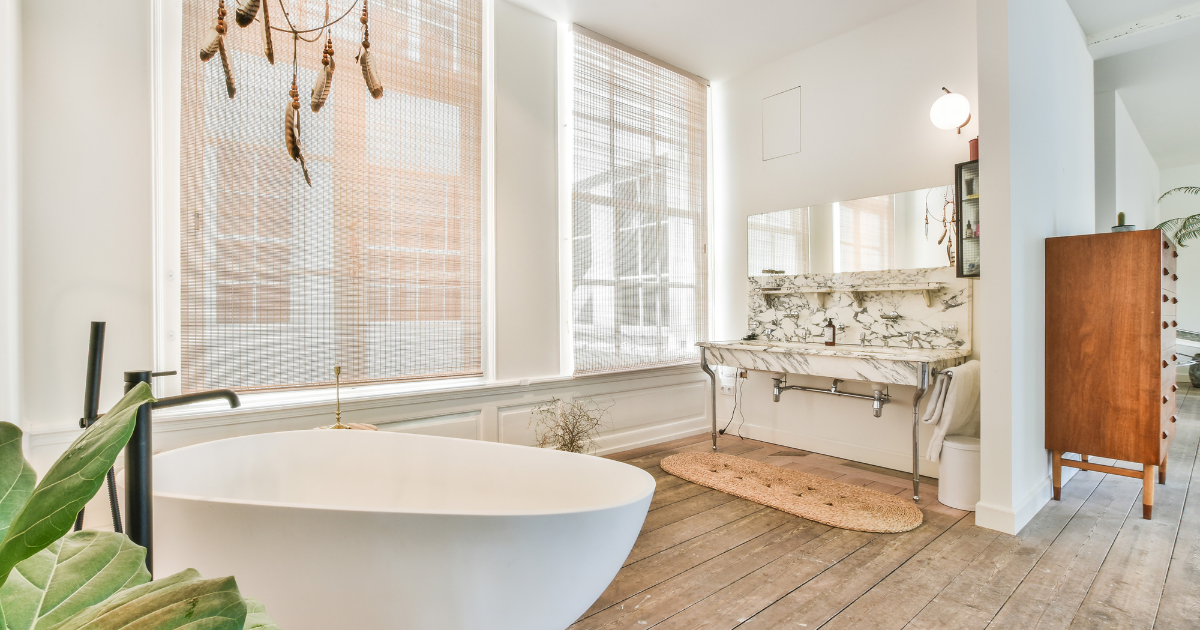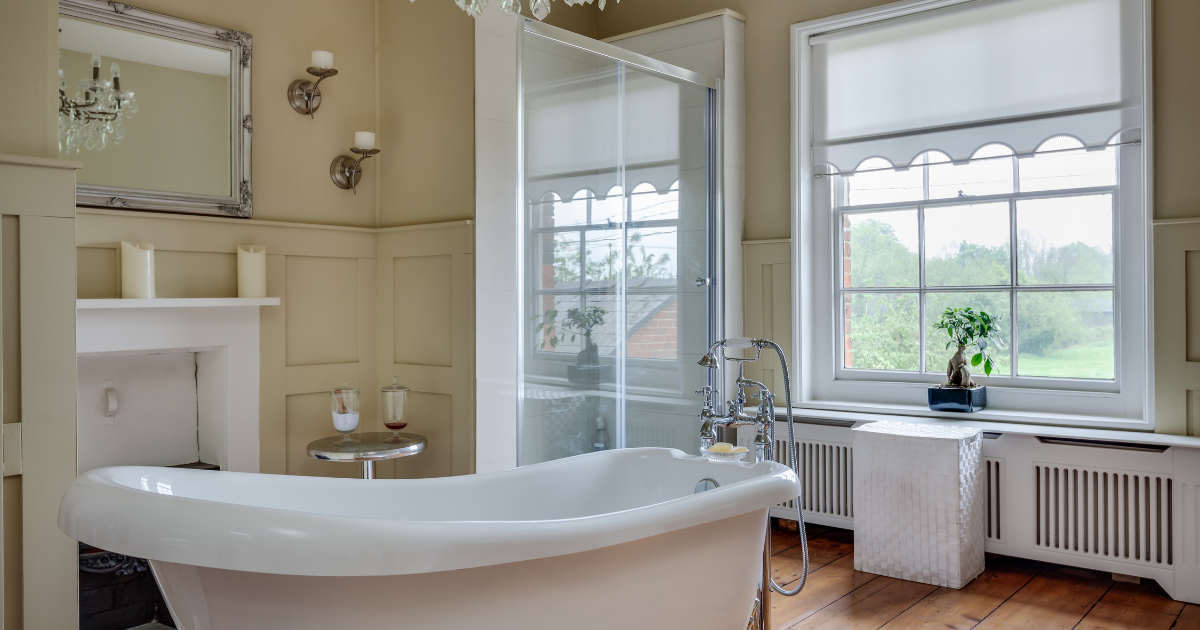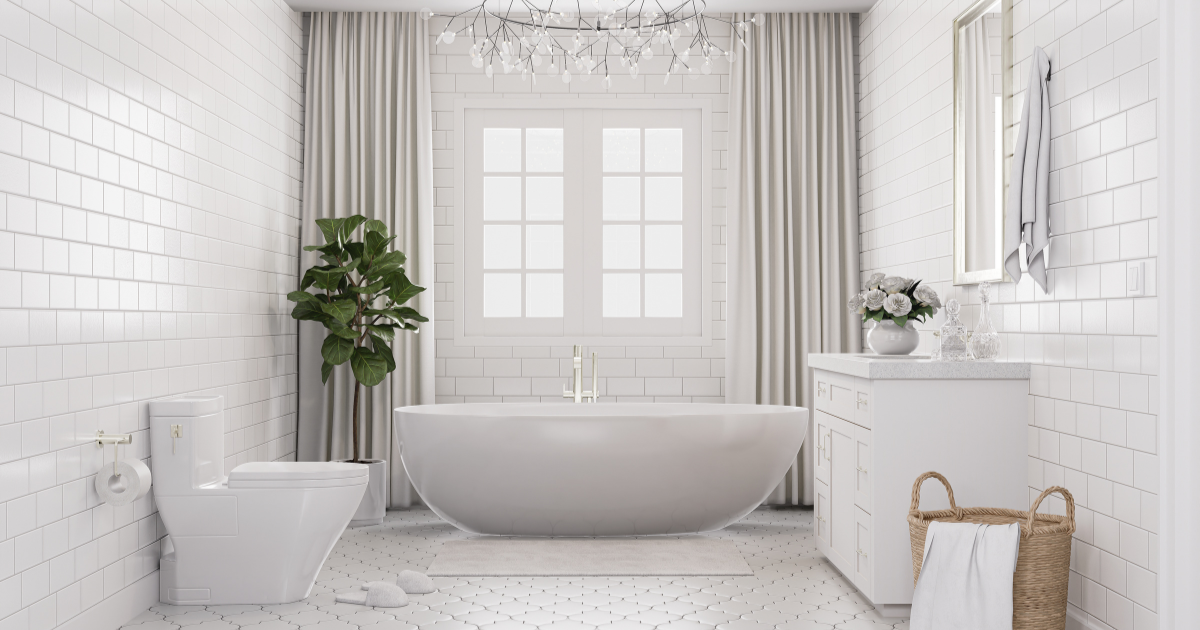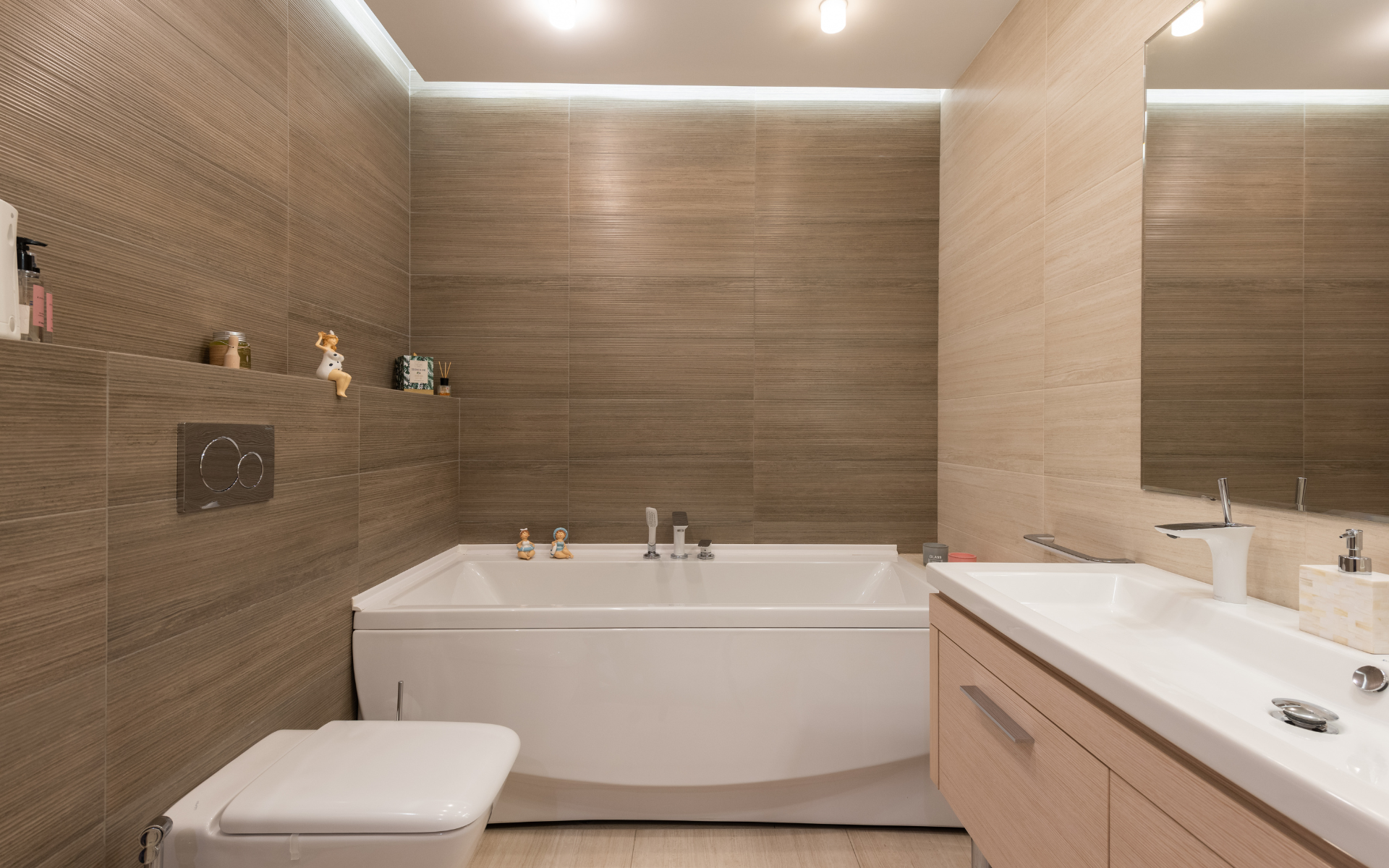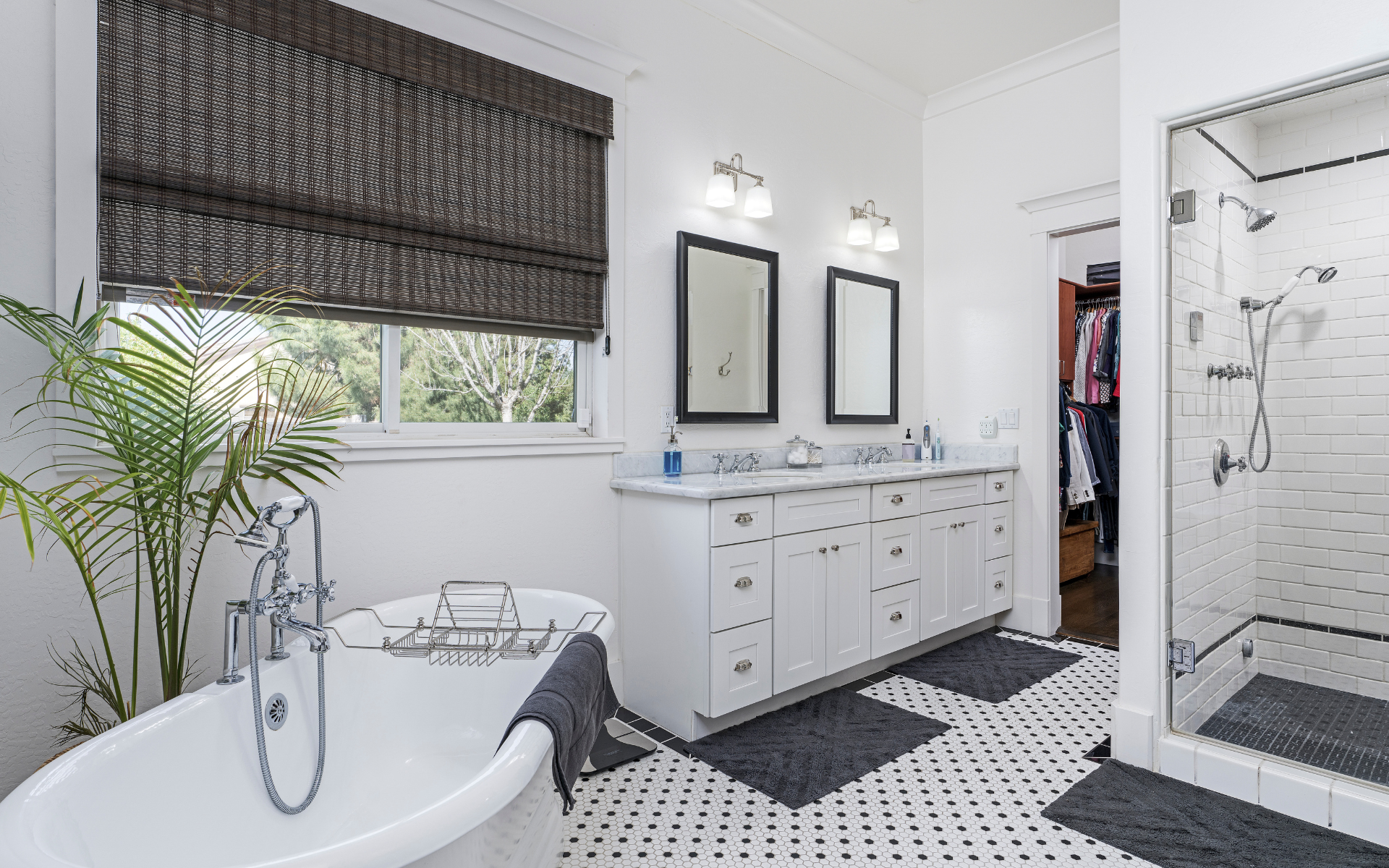
Is your bathroom cramped, dated, and downright dreary? Do you dream of unwinding in a spa-like retreat, but lack the know-how to get there?
Remodeling a bathroom can seem like a daunting task, but with some planning and preparation, you can create the bathroom of your dreams!
Table of Contents
In this comprehensive guide, we spill the secrets of everything from setting your budget to choosing just the right soaking tub. With a little planning and expert guidance, you CAN create the ideal bathroom for pampering, primping, and preparing for the day ahead in style.
Determine Your Goals and Set a Realistic Budget
The first step is deciding what you hope to achieve with your bathroom remodel. Do you want to completely gut and rearrange the space or make small updates? Key goals may include:
- Increasing storage space
- Improving functionality and layout
- Updating surfaces and finishes
- Installing new plumbing fixtures
- Adding special features like a walk-in shower
Once you’ve outlined your goals for your kitchen and bath, it’s vital to set a realistic budget. Bathroom remodels span a huge range depending on the scope of work, with the average bathroom renovation costing $10,000 to $25,000. Carefully consider must-haves versus nice-to-haves, get multiple quotes, and factor in contingency costs.
Work With the Right Bathroom Designer
Bathroom design encompasses everything from layout to choosing finishes and fixtures. Working with a professional bathroom designer can help maximize both aesthetics and functionality. Look for someone experienced in:
- Evaluating the existing bathroom dimensions
- Developing practical layouts and floor plans
- Selecting materials, colors, and other details
- Managing contractors and project scope
Ideally, your bathroom designer will translate your vision into a beautiful, functional new bathroom within your budget.
Update the Floor Plan For Better Flow
It’s amazing how small tweaks to a bathroom’s floor plan can drastically enhance functionality. As you remodel, look for ways to:
- Improve traffic flow and capacity to maneuver
- Add or reconfigure storage to conceal clutter
- Streamline routines like brushing teeth and getting ready
- Allow for universal access if needed now or later
Think about each family member’s needs and age-related considerations as you update the layout. Common improvements include widening doorways, adjusting plumbing fixture placement, increasing natural light, and adding built-in storage solutions.
Choose Fixtures and Finishes
Selecting materials and finishes brings your design from concept to reality. These choices also have the biggest impact on the look and feel of your new bathroom. Considerations include:
Bathroom Sinks and Faucets
- Vessel, pedestal, undermount, or vanity? Choose bathroom sink styles and faucets in line with your decor.
- Prioritize easy maintenance and durable, water-efficient models.
Showers and Bathtubs
- Shower stall or combination tub/shower? Measure carefully!
- Frameless glass doors offer an open, airy aesthetic.
- Grab bars, benches, and other shower accessories to boost accessibility.
Toilets and Bidets
- Elongated bowl toilets are more comfortable to use.
- Features like a soft-close lid, built-in bidet, or heated seat upgrade your experience.
- Wall-hung toilets save space and ease cleaning.
Tile, Paint, Lighting, and More
- On-trend paint colors or tile patterns make the room pop.
- Warm lighting, both ambient and task, prevents a clinical feel.
- Little touches like framed mirrors or art give personality.
Interview and Hire Contractors
Unless you plan to DIY the demolition and rebuilding work, lining up qualified contractors is key. Be sure to:
- Get recommendations and reviews. Verify proper licensing.
- Interview at least three contractors and request similar project bids.
- Check references thoroughly and ask lots of questions.
- Communicate goals, budget parameters, and timeline expectations.
Specialty contractors to consider hiring include:
- General contractors to oversee the project
- Plumbers for fixture installation and drainage
- Electricians to update lights, ventilation, and outlets
- Tile installation contractors
- Carpenters for cabinetry, built-ins, and trim work
Plan for Permitting, Demolition, and Construction
With designers and contractors on board, now the real work begins! Be prepared for:
Permitting and Inspections
Most bathroom renovations require permits, which your contractor will apply for. Common permits include plumbing, electrical, mechanical, demolition, and general construction.
Demolition
The tear-out phase removes outdated materials to make way for new construction. Be prepared for noise, debris, and saying goodbye to your existing bathroom for a while!
Construction
Finally, the rebuilding happens. From framing to finish plumbing and electrical, drywall, paint, cabinetry, flooring, and more, enjoy watching your new bathroom come to life!
Style Your New Bathroom
Finishing touches like towels, shower curtains, bath accessories, and storage options make the room complete. Shop for:
- Shower curtains and accessories
- Bath mats, towels, and other linens
- Wastebaskets, tissue holders, soap dishes, and trays
- Mirrors, art, plants, and decor
- Hampers, cabinets, shelves, and organizing solutions
After all the dust settles, take time to enjoy your brand-new, picture-perfect bathroom!
Additional Storage Solutions
Lack of adequate storage space is one of the most common complaints about existing bathrooms. As you remodel, look for smart ways to stash all those toiletries, beauty products, medications, cleaning items, laundry, and other bathroom necessities out of sight. Custom cabinets, shelves, and organizers help keep the space tidy and uncluttered.
Specific storage solutions to consider include:
- Built-in or freestanding cabinets for folded towels and toilet paper
- Pull-out cabinets for storing cleaning and first aid products
- Undersink drawers and organizers for backup supplies
- Narrow shelving between studs or display ledges for decor
- Over-the-toilet shelves and storage units
- Laundry hampers concealed in cabinetry
- Wall niches for extra storage without taking up floor space
Take time to measure your existing storage areas and make a list of what you need room to organize before designing the layout. Clever yet expansive use of every possible storage nook prevents frustrating clutter build-up over time.
Think Carefully About Lighting Needs
Proper bathroom lighting serves both aesthetic and functional purposes. Evaluate your current setup to determine if an upgrade could make the space more usable. Key considerations include:
- Task lighting: Places adequate illumination directly where needed most, like over the vanity or shower area.
- Ambient: Sets the overall mood via fixtures like recessed cans or wall scones.
- Accent: Draws attention to decorative features using track lighting or picture lights.
- Natural: Windows and skylights reduce the need for artificial lighting during daylight hours.
Also, factor in lighting controls like dimmers and automatic-off switches. The right mix of lighting makes even an everyday routine like putting on makeup enjoyable. It also prevents squinting which leads to earlier aging and eye issues.
Choose Eco-Friendly and Water-Saving Options
An environmentally friendly bathroom makeover checks boxes for sustainability as well as comfort and beauty. Be on the lookout for greener options like:
- Water saving: Low-flow showerheads, faucets, and toilets drastically cut water consumption. Look for EPA WaterSense labeled models.
- Tankless water heaters: On-demand hot water prevents waste and saves space.
- Natural stone and tile: Earth-friendly surfaces made from renewable materials.
- Recycled glass tile: Gorgeous accents made from post-consumer glass.
- Plant-based paint: Zero-VOC paints improve indoor air quality.
- Energy-efficient lights: LED bulbs, smart controls, and lots of natural light minimize energy usage.
Sustainable materials: Cabinets, surfaces, textiles, and decor made from renewable and recycled materials.
By selecting environmentally considerate finishes, technology, and decor wherever possible, you create a bathroom that’s truly good for people and the planet.
Add Special Touches Just for You
Finally, don’t forget about those special details that customize the bathroom to match your unique taste and lifestyle. Here are some of the best bathroom remodeling ideas:
- Theme colors: Pick a unique color scheme, whether boldly vibrant or quietly soothing. Popular options range from serene blues, greens, and grays to warm neutrals and energizing jewel tones.
- Focal features: Incorporate an artistic sink, textured tile design, or unexpected finishes as a memorable focal point.
- Hi-tech extras: Upgrade with luxury additions like in-floor heating, steam showers, built-in TVs, or music.
- Salon station: Designate countertop real estate and outlets for blow drying, flat ironing, and beauty rituals.
- Pet needs: Include a wall-mounted pet washing station, litter box enclosure, or pet-friendly flooring if needed.
- Kids amenities: For families, add child-friendly storage, bath toys, vivid colors, a shorter vanity, and more.
- Accessibility upgrades: Prepare for future needs with zero-threshold showers, grab bars, and adjustable everything.
Ultimately, those personalizing perks that make you smile each morning help transform an average bathroom into your dream retreat.
Frequently Asked Questions
How much does it cost to remodel a bathroom?
It ranges from $7,500 to $25,000+, with most homeowners spending $9,274 on average for a mid-range remodel involving new fixtures and basic layout changes. Luxury master bath remodel can reach $50,000+.
Can I remodel my bathroom myself?
With proper DIY skills, smaller updates like repainting or installing new floor tile may be manageable. However extensive plumbing and electrical work require professional help to meet building codes and avoid costly mistakes. Consider your abilities before committing to a full DIY remodel.
How do I get permits for my bathroom remodel?
Your general contractor or remodeling team will apply for required building permits on your behalf. Typical permits needed relate to plumbing, electrical systems, HVAC, demolition work, and general construction.
How long will it take?
Most bathroom remodel projects take 4-6 weeks from demolition to finish, assuming no major issues arise with existing plumbing or structure. Typical phases include permit approval, demolition/prep work, plumbing pipes and electrical, installing surfaces/fixtures, finishing details, and inspections. Expect at least some temporary inconvenience!
Conclusion: Enjoy Your Fresh New Bathroom
While bathroom renovation involves significant effort, cost, and coordination, the results make it worthwhile. Follow the tips above to craft a beautiful space, that meets your family’s needs, and adds value to your home for years to come. With careful planning and professional support, your dream bathroom refresh can soon be a reality!

